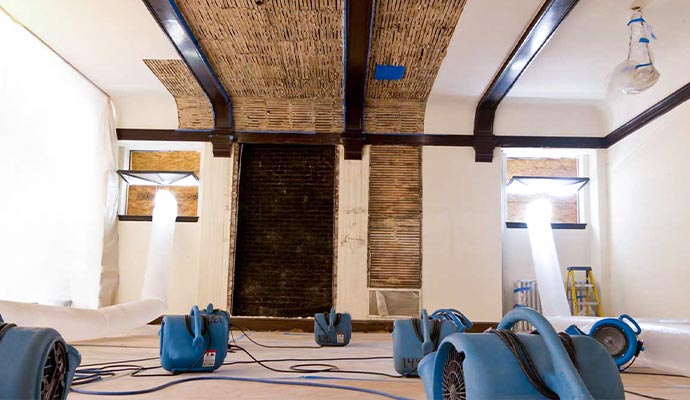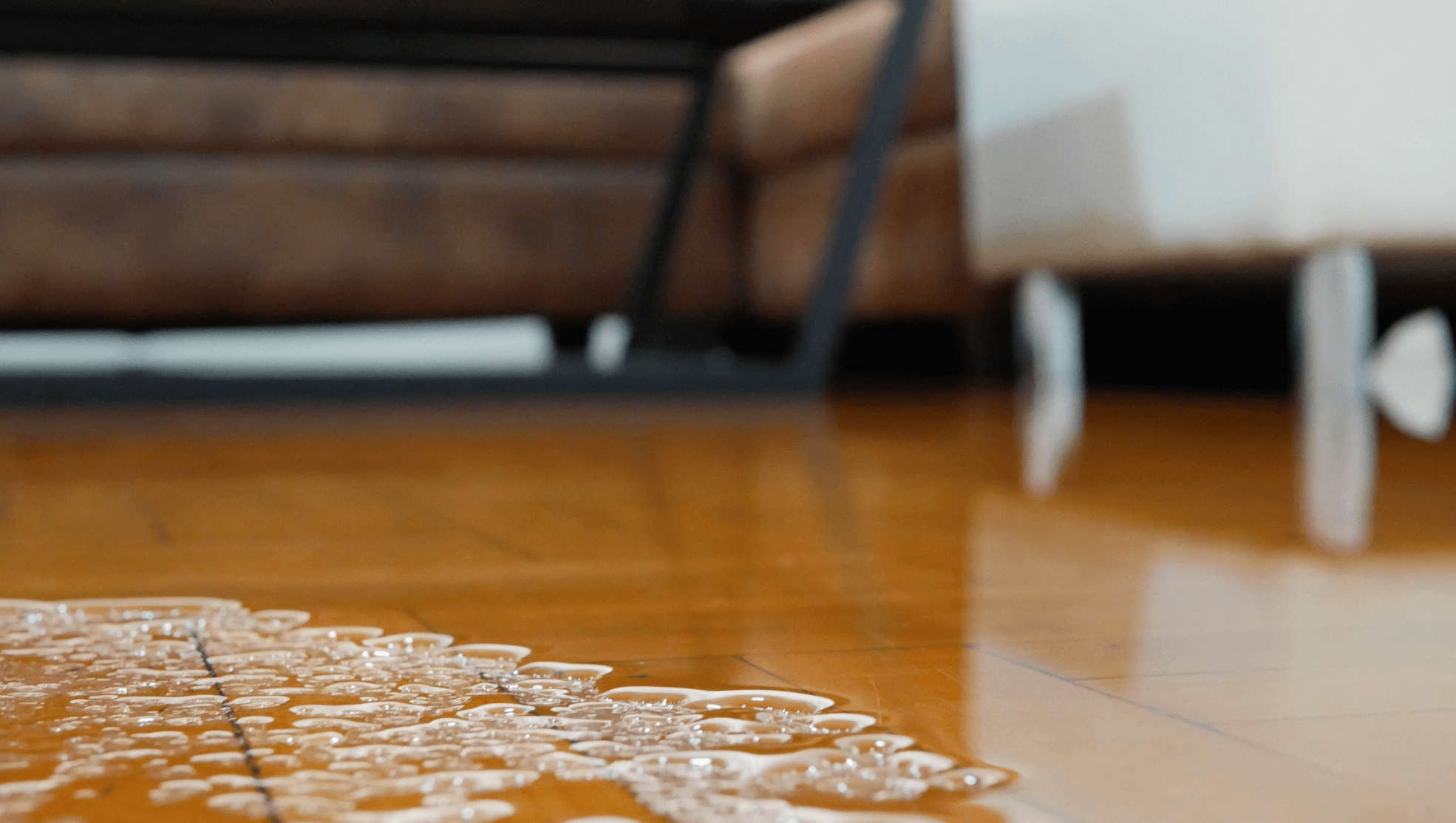Expert Mold Remediation Philadelphia: Transformative Solutions for Your Room
Expert Mold Remediation Philadelphia: Transformative Solutions for Your Room
Blog Article
Emergency Water Damage Remediation: Swift Action to Decrease Additional Damages
Water damages can strike unexpectedly and leave destructive impacts on businesses and homes. When faced with such a situation, a quick response is essential to reduce additional damage and stop prospective wellness threats. Yet what precisely does emergency situation water damages restoration entail? In this discussion, we will certainly dig into the value of instant action, the assessment process, the actions associated with water extraction and drying out, mold and mildew avoidance and remediation, and eventually, the remediation of the affected location. By recognizing the urgency and extensive nature of this process, you will obtain beneficial understandings into how specialists take on emergency situation water damage, guaranteeing a swift and effective feedback.
Importance of Swift Action
Swift feedback is of utmost value in water damage reconstruction to decrease additional damage and minimize potential threats. The longer water sits in a structure, the more damages it can trigger.
One of the major reasons speedy reaction is essential in water damages restoration is to avoid the growth of mold and mildew and mold. Mold can begin to grow within 24 to two days of water exposure, and when it holds, it can spread swiftly throughout the affected location. Mold not just causes additional damages to the structure of the structure but also postures health and wellness threats to residents. By reacting promptly, professionals can completely dry out the area and inhibit the development of mold, reducing the demand for extensive remediation and making certain the safety of those included.
Furthermore, a timely action can aid salvage and recover valuable valuables and possessions - home inspector philadelphia. Water damage can be devastating, especially when it affects personal items of financial or sentimental worth. Acting swiftly allows professionals to assess the damages and apply ideal reconstruction techniques to salvage as high as feasible. This not just assists to reduce economic losses but likewise brings tranquility of mind to those impacted.
Examining the Degree of Damages

During the assessment, restoration professionals thoroughly examine the damaged location to determine visible signs of damages, such as water discolorations, distorted materials, and mold and mildew development. They likewise utilize specialized equipment to detect surprise damages, such as wetness meters and thermal imaging cameras. This comprehensive evaluation permits them to properly identify the extent of the damages and establish a tailored reconstruction strategy.
Since it aids experts prioritize their efforts,Analyzing the degree of water damage is essential. They can determine areas that call for immediate focus, such as standing water removal and drying out, to avoid further damage and reduce the threat of mold development. They can likewise establish the areas that require repair work or substitute, guaranteeing that no damages goes unnoticed or untreated.

Water Extraction and Drying Out Refine
The water extraction and drying out procedure is a critical step in water damages reconstruction, as it involves the elimination of excess water and the thorough drying of the afflicted location to prevent further damage and minimize the danger of mold and mildew development. After assessing the extent of the water damage, the following action is to remove the water from the damaged area.
This action is crucial in preventing secondary damages, such as architectural damages and the development of mold and mildew and mold. The drying process might take numerous days, depending on the degree of the water damages and the materials included.
It is necessary to guarantee that the afflicted area is completely dry before proceeding with any kind of fixings or repair. Failing to completely dry the area can lead to lasting concerns, consisting of weakened structures, stuffy smells, and the growth of mold and mold. Consequently, specialist water damage remediation companies use wetness detection equipment to guarantee that the affected location is totally dry before continuing to the following step.
Mold And Mildew Prevention and Removal
Efficient mold avoidance and remediation are crucial in water damages restoration to make certain the security and integrity of the afflicted area. mold remediation philadelphia. When water damages happens, whether from a burst pipeline, flooding, or a leaky roofing, it creates an excellent atmosphere for mold and mildew development. Mold can start to create within 24 to 48 hours after water damages, and if left untreated, it can spread swiftly and cause severe health dangers
To stop mold development, it is important to resolve water damage quickly. The primary step is to identify and repair the resource of the water invasion. When the source is repaired, the damaged location should be completely dried to stop moisture from lingering. This home inspector philadelphia may include the usage of dehumidifiers, air moving companies, and other customized equipment to eliminate excess moisture from the air and surface areas.
In instances where mold investigate this site and mildew development has actually currently occurred, removal is necessary to eliminate the mold and mildew and stop its return. This entails the mindful elimination and disposal of damaged products, such as drywall or rug, to make sure that all traces of mold are gotten rid of. It is important to keep in mind that mold remediation ought to be carried out by professionals who have the necessary training and tools to securely remove and handle mold and mildew.
Recovering the Affected Location

First of all, it is necessary to thoroughly dry the area to avoid any type of more damages and to inhibit the growth of mold and mildew. This might entail using specialized drying out tools, such as dehumidifiers and industrial-grade followers, to get rid of all dampness from the afflicted surfaces.
When the area is totally dry, the remediation process can begin. This may involve changing or fixing damaged architectural aspects, such as drywall, floor covering, or ceiling ceramic tiles. It is crucial to attend to any type of underlying issues that may have created the water damages, such as leaking pipes or defective plumbing, to prevent future cases.
In addition, bring back the affected area might likewise include painting walls, replacing damaged fixtures, and extensively cleansing and sanitizing the room. This makes certain that not only is the area structurally sound, however it is also cosmetically pleasing and secure for tenancy.
Final Thought
Analyzing the extent of damage permits for effective water extraction and drying processes to be implemented. Overall, prompt action and extensive restoration steps are crucial to minimizing the adverse effects of water damage.
Swift feedback is of utmost value in water damages restoration to minimize further damage and minimize possible threats.Throughout the assessment, remediation specialists extensively check out the affected area to identify noticeable indications of damage, such as water discolorations, deformed products, and mold development.The water removal and drying out procedure is a vital action in water damage restoration, as it includes the removal of excess water and the detailed drying out of the damaged location to avoid more damage and mitigate the risk of mold and mildew growth. After analyzing the extent of the water damage, the next step is to extract the water from the afflicted location.Effective mold and mildew prevention and remediation are critical in water damage restoration to guarantee the safety and security and more tips here honesty of the damaged location.
Report this page